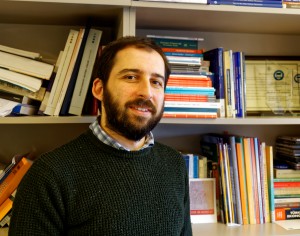In a nutshell
Regional disparities demarcated by a developed west and an underdeveloped east are widening in Turkey.
Not only regional incomes but also development of education-based human capital are rapidly polarising among Turkish regions.
Evidence shows that there is still room for policy: the influence of policy-insensitive measures on education is less pronounced compared with the influence on wages.
Regional inequality is one of biggest socio-economic problems facing the Turkish economy. Indeed, it is a longstanding problem: our knowledge of the early Republican era confirms the existence of a west-east dichotomy.
There are numerous sources in the country’s history for regional disparities: the collapse of ties with eastern countries following the downfall of the Ottoman Empire; the loss of young people after the First World War and the Turkish War of Independence; the inability to raise and distribute capital at regional scale, largely owing to the profit and capital allocation of the Ottoman system; the priority given to macroeconomic development and country-level economic fundamentals; and so on.
These issues seem to form the backbone of inequalities. But after the 1980s and the liberalisation of the Turkish economy, there has been a worsening of imbalances at the regional level. Numerous scholars discuss the reasons behind these large differences in production style, income level, employment structure and so on. In general, the consensus is that factor allocation is the key driving force behind the deepening of spatial inequalities.
Underpinning these concerns, human capital accumulation deserves special attention. More specifically, the determinants of the development of educational human capital should be elaborated in order to understand the potential impact of regional policies on spatial development.
On the one hand, individuals invest in education as they expect higher earnings with increased education levels. Since firms with greater access to markets will have a larger surplus of funds to be distributed to workers, we expect that in central locations there will be stronger incentives to invest in education in.
On the other hand, there are some other micro factors that influence individuals’ decisions to increase their education levels, such as cultural factors, rules and norms at the regional level, legal rights related to labour, experience, etc.
While the former explanation relies on the ability of a region to transfer more premiums to educated workers, the latter basically spends more time on individual issues that are thought to be more policy-sensitive.
Our research traces the roots of human capital development by revisiting these two contradictory views as we have enough reasons to believe that the development of educational human capital influences regional development. Eventually, there is a chicken-egg problem – the so-called ‘endogeneity’ issue. Human capital development seems to be not only a determinant but also an outcome of this whole process.
Therefore, we first investigate whether regions’ overall profitability (thus their market access) influences the development of educational human capital. At this early stage, we rule out the impact of a sub-channel over returns to education (thus wage distribution). Next, we use returns to education, the level of education and market access in the same framework by taking account of endogeneity.
The education level of Turkish regions that are not remote (thus central) are observed to be higher. Without controlling for the impact of wages (returns to education) but taking account of various other issues, market access of locations influences people’s educational decisions.
At this stage, the problem is the rigidity of market access; that is, historically, there is a very limited change in the distribution of province-level market accessibility. So, once a region is central, it is central. For these regions, as well as the remote ones with lower market access, few policy measures are in effect. Therefore, if we rely on these results, development of education-based regional human capital seems policy-insensitive.
But we are highly concerned about the inability to account for returns to education and some other individual factors that can also affect educational investments. Moreover, possible bi-directional links and the endogeneity issue deserve more attention. As a final attempt and in order to focus on the individual characteristics; returns to education (wages), educational attainment and market accessibility are integrated into the same framework.
Our findings should be central to policy-making. Importantly, accessibility of regions heavily influences returns to education. Assuming that the firms in central locations with high market accessibility are more profitable, a natural outcome is the ability to distribute higher wage premiums to individuals.
But unexpectedly, this does not directly cause higher development of educational human capital. The impact of market access on education is no longer visible when returns to education is further controlled for.
This, we believe, is something positive in terms of regional and human capital-based policy-making. That is, the strong influence of market access on wages signals the inability of any policy measure to influence the distribution of wages (leaving the regional wage determination completely to markets).
On the contrary, the failure to establish a causal link between education level and market access broaches a discussion of the possibility of policy measures to combat disparities in the development of educational human capital.
Further reading
Karahasan, Burhan Can, and Firat Bilgel (2018) ‘Economic Geography, Growth Dynamics and Human Capital Accumulation in Turkey: Evidence from Regional and Micro Data’, ERF Working Paper No. 1233.



